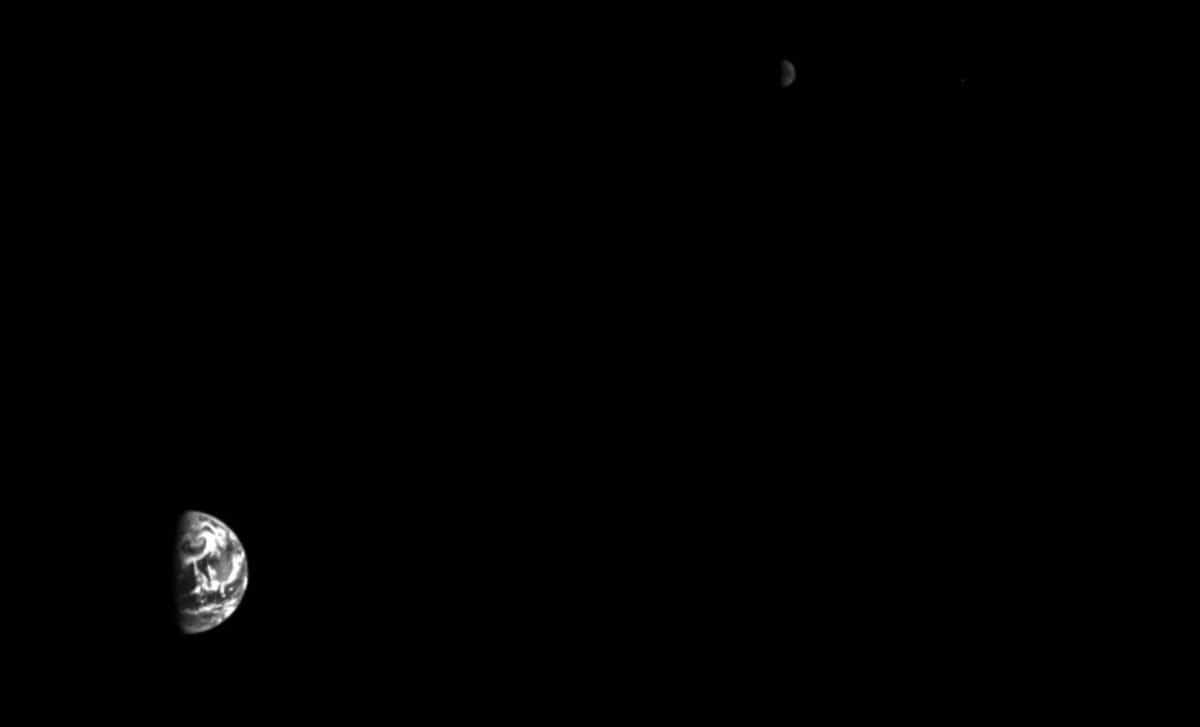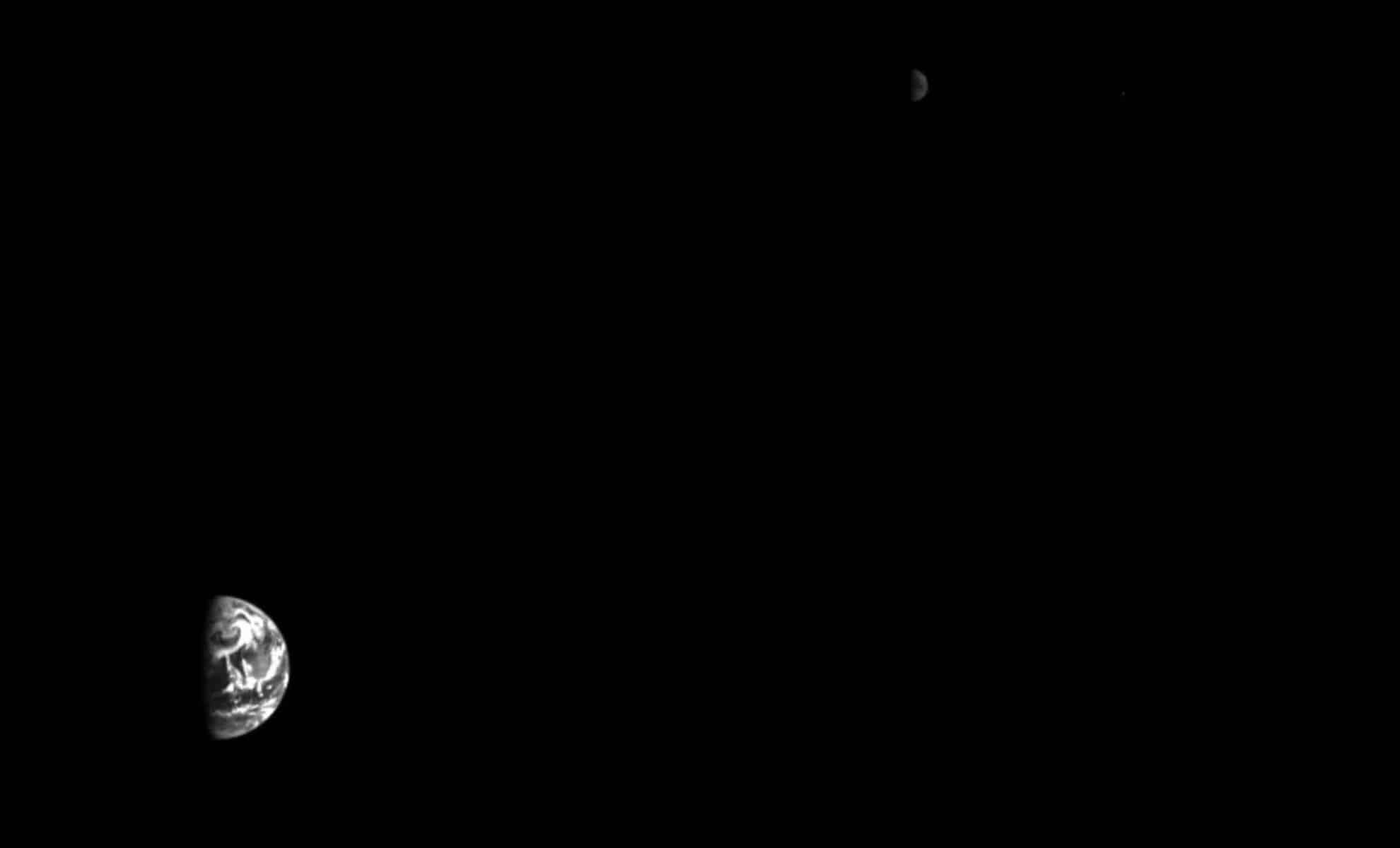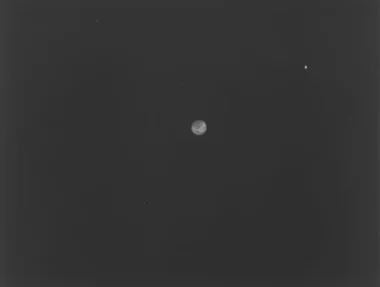The Hera spacecraft, on a mission to study the aftermath of NASA’s DART asteroid impact, has beamed back its first images from space. Taken from a distance of over 1.6 million kilometers, the images show Earth and the moon against the vastness of space. Hera’s mission, launched by the European Space Agency (ESA), will arrive at the Didymos-Dimorphos asteroid system in 2026 to further investigate the impact’s effects and provide crucial data for future asteroid deflection missions.
The Hera Spacecraft Captures Stunning Earth and Moon Images on Its Way to Study Asteroid Impact

The Hera probe, launched by the European Space Agency (ESA), has sent back its first images of Earth and the moon as it begins its long journey toward the Didymos-Dimorphos asteroid system.
The spacecraft, which successfully launched in October 2024, is a follow-up mission to NASA’s Double Asteroid Redirection Test (DART), which deliberately impacted Dimorphos in 2022. Hera’s task is to assess the aftermath of the collision and evaluate the feasibility of asteroid deflection as a method for protecting Earth from potential impacts.
A Farewell Look at Earth
The newly released images were taken just days after Hera’s instruments were activated for the first time in space. Using its Asteroid Framing Camera (AFC), Hera captured a stunning view of Earth and the moon from a distance of 1.6 million kilometers (1 million miles). In the images, Earth appears in the bottom left corner, illuminated by bright swirling clouds over the Pacific Ocean, while the moon can be seen near the center. In a post on X (formerly Twitter), ESA shared the image with the caption, "Farewell, Earth!", marking Hera’s departure into deep space.
🌎 Farewell, Earth! 👋
Last week, after we successfully launched our Hera mission, its instruments were switched on for the first time and the asteroid deck was pointed back towards our planet.
This allowed Hera to capture the first images of Earth and the Moon from a distance… pic.twitter.com/usrZtxapRU
— European Space Agency (@esa) October 14, 2024
In addition to the AFC image, another photograph was taken by the spacecraft’s Thermal Infrared Imager (TIRI), which captured Earth from approximately 1.4 million kilometers (900,000 miles) away. In this image, Earth’s north pole is oriented upward, with the Atlantic Ocean and eastern U.S. coast visible, while the moon appears as a bright point in the top right. These early tests of Hera's instruments provide valuable data that will be used later when the spacecraft studies the asteroid system in greater detail.
The Mission to Assess DART’s Success
Hera’s journey will culminate in a detailed study of Dimorphos, the smaller moon of the Didymos asteroid, which was impacted by NASA’s DART mission in 2022. DART’s success in changing Dimorphos' orbit demonstrated that asteroid deflection could be a viable planetary defense strategy. However, many questions remain about the long-term effects of the impact and the exact changes to Dimorphos' structure.
“Hera is going to perform a full characterization of Dimorphos that will allow us to fully understand the effectiveness of the DART’s impact technique,” said Paolo Martino, Deputy Project Manager for the mission. By studying the size and depth of the crater created by the DART collision, Hera will provide crucial data on how different types of asteroids respond to kinetic impacts. This information could help refine future asteroid deflection missions, ensuring that we have a reliable method to protect Earth from potentially hazardous space rocks.
Preparing for Asteroid Exploration
Hera’s mission is not only focused on surface impacts but also on understanding the internal structure of Dimorphos and Didymos. The spacecraft carries a suite of instruments, including the HyperScout H sensor, which can detect mineral compositions by analyzing light wavelengths invisible to the human eye. This technology will help scientists determine the composition of the asteroids, shedding light on their physical properties, such as density and porosity.
Accompanying Hera on this mission are two CubeSats, named Milani and Juventas, which will assist in mapping the surface and interior of Dimorphos. These small satellites will work in tandem with Hera to study the asteroid’s gravitational field and assess how the impact affected its structure.
With Hera set to arrive at its target in 2026, scientists are eager to see the data it will collect. The mission promises to be a major step forward in understanding asteroid dynamics and will provide invaluable insights for planetary defense efforts.




